#dykes camera action
Photo



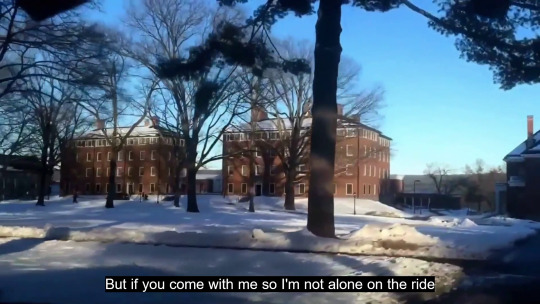



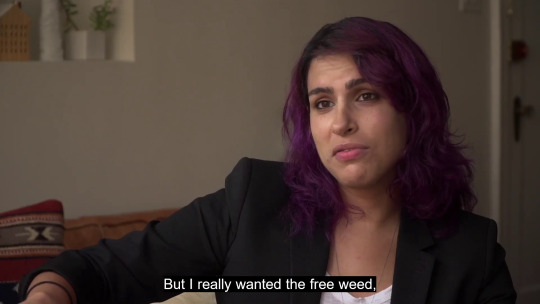
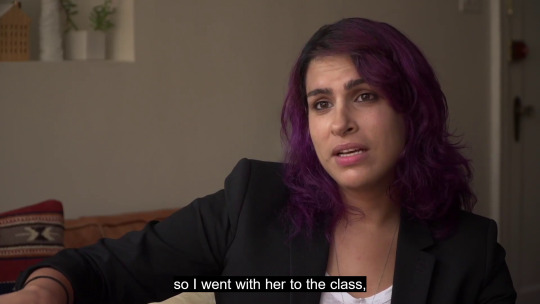

Desiree Akhavan on getting into film // Dykes, Camera Action! (2018) dir. Caroline Berler
#lgbtcinema#dykes camera action#desiree akhavan#caroline berler#documentary#film#fm#*#q#subtitles#int#women directors#lgbt directors#wlwoc#w#drugs m/#1k
1K notes
·
View notes
Text
ᡣ𐭩ྀིྀི’ Streamer!Ellie

warnings || none !!
lower case intended
{ I LOVE streamer els :’( }
⋆⭒˚。⋆ ⭒˚。 ⋆⭒˚。⋆⭒˚。⋆ ⭒˚⋆⭒˚。⋆ ⭒˚。⋆⭒˚。⭒˚。⋆ ⭒˚。⋆
✮ streamer!ellie ' who's set up is either a really shitty web cam or top tier. Either way she def takes pride in it !
જ⁀➴
✮ streamer!ellie ' who watches shitty reality tv shows on stream and her reactions to the scenes def had a part of her blowing up.
જ⁀➴
✮ streamer!ellie ' was really insecure when she was just starting out streaming , like poor baby would tape up her camera up in fear it would randomly turn on ;((
જ⁀➴
✮ streamer!ellie ' who after hitting a milestone finally did a face reveal and was shaking in her boots.
She was just yapping to yap lwky.. because of how nervous she is
"So chat are we perhaps rocking with my outfit !"
જ⁀➴
✮ streamer!ellie ' who fucks around with her soundboard way to much ..
like baby be pushing buttons at the wrong time
જ⁀➴
✮ streamer!ellie ' who be fighting with her viewers sometimes..
'@elliesbigfatlefttoe - Ellie why can I SEE your armpit hair peaking out bae..'
SHE SNAPS BACK SOO QUICK
"BIG FAT WHAT? .. The fuck come bite it off for me then weirdo"
જ⁀➴
✮ streamer!ellie ' who plays a variety of games from Minecraft , Valorant , Roblox , Fortnite [ she gets called dog water by random 10 year olds.. (╥﹏╥) ] a bunch of random horror games and some rpg games.
She also does chill talking streams & random reaction videos.
LMAO SHE DEF READS FANFICS ABT HERSELFF
જ⁀➴
✮ streamer!ellie ' who EATS on fashion famous
જ⁀➴
✮ streamer!ellie ' gets herself into random ass twitter beef and just takes all the roast she gets by 10 year old arianators..
જ⁀➴
✮ streamer!ellie ' is really just a big loser
જ⁀➴
✮ streamer gf!ellie ' who after she blew up needed to introduce you to her stream , or at least make it known shes MARRIED.
ellie randomly drops the gf bomb on everyone on a random thursday stream outta no where..
୨♡୧
It was a pretty chill just chatting stream
when ellie started to give her viewers a ring tour. the pads of her fingers brushed against a certain ring on her left hand . a smirk could be seen adoring ellie's face while she slipped it off and tried to be a lil beauty guru showing the ring off.
up close in action shots as she called it..
"It's a promise ring with the wifey you know !" she said with pride forming inside her chest and a smile falling on her face.
Tik tok and wlw twitter sighed that day..
જ⁀➴
✮ streamer gf!ellie ' who soft launches you and your identity.
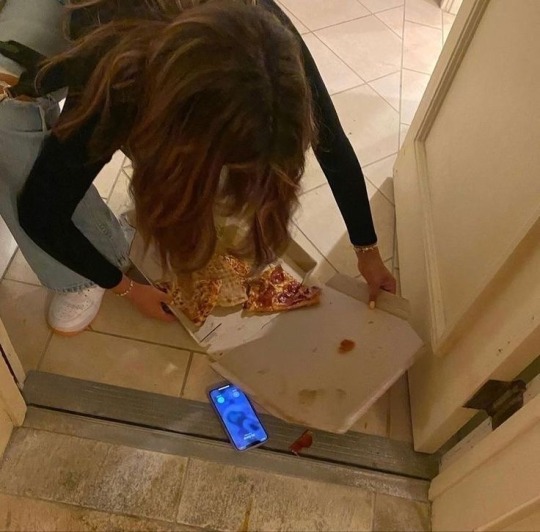
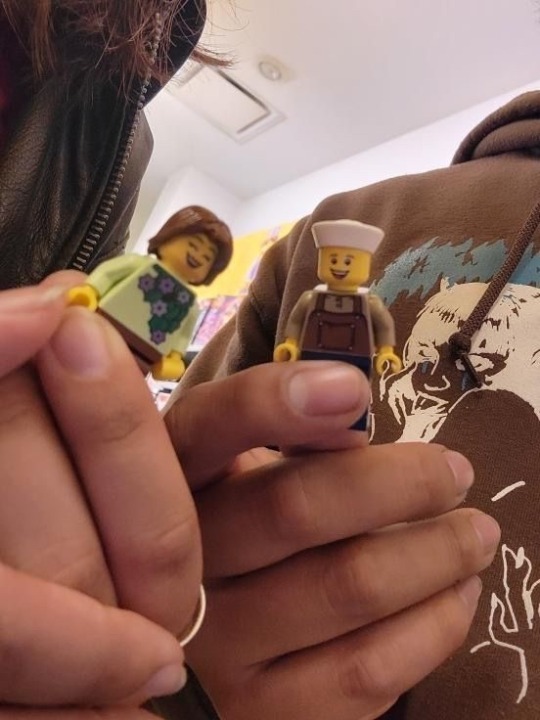
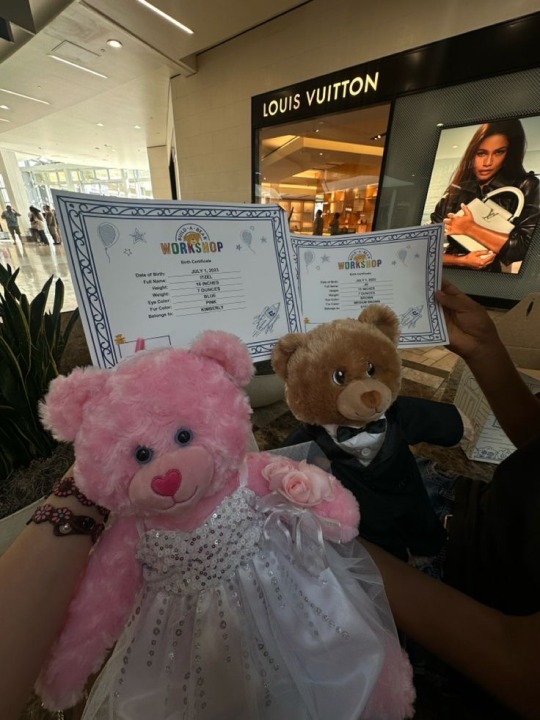
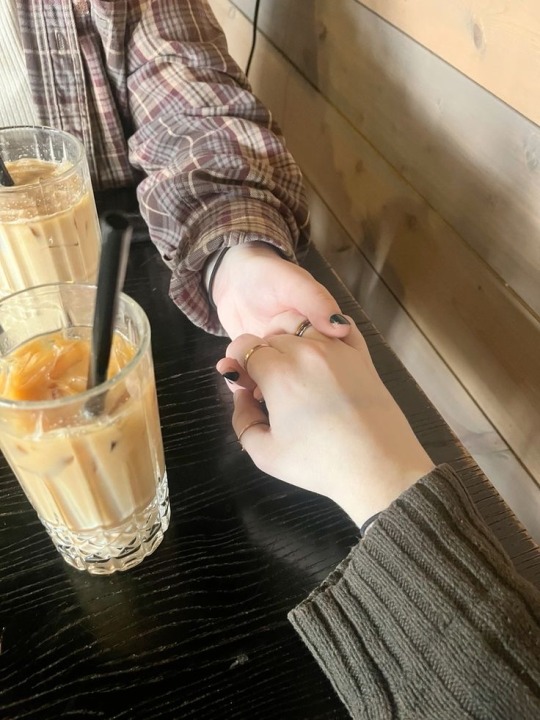
જ⁀➴
✮ streamer gf!ellie ' who loves when you sit in her streaming room with her ! although she tends to get a bit shy knowing your presence is there
જ⁀➴
✮ streamer gf!ellie ' who talks the most shit with you about petty drama in her community ..
"babe you'll never guess who got cancelled .."
before you could even open up your lips to ask her what happened she cut you off in an instant
"bro that dyke abigail , her ex came forward saying she gave her fucking chlamydia.. goodness dirty ass bitch"
જ⁀➴
✮ streamer gf!ellie ' who loves the way you love her. she can't ever seem to really wrap her mind around the fact that you've really stuck around with her for this long!
જ⁀➴
✮ streamer gf!ellie ' who is wife !!
⋆⭒˚。⋆ ⭒˚。 ⋆⭒˚。⋆⭒˚。⋆ ⭒˚⋆⭒˚。⋆ ⭒˚。⋆⭒˚。⭒˚。⋆ ⭒˚。⋆
Hii bbys I acc had sm fun writing this ! soo again maybe part two ?
Again requests are wide open so pls send some !!
ILYSMM and TYSM for reading !! (∩˃o˂∩)♡
⋆⭒˚。⋆ ⭒˚。 ⋆⭒˚。⋆⭒˚。⋆ ⭒˚⋆⭒˚。⋆ ⭒˚。⋆⭒˚。⭒˚。⋆ ⭒˚。⋆
daily click for Palestine !!
from the river to the sea Palestine WILL be free!! 🍉
#streamer!ellie#Ellie fluff#ellie x fem reader#ellie the last of us#ellie tlou#tlou#ellie williams#TLOU fluff#last of us fic#»-♡→ ‘ Cupid yaps#abby x reader#abby fluff#i love youu
219 notes
·
View notes
Text
A list of season 2 cast and crew members, confirmed and speculated
I will try and keep this updated
Not counting the obvious ones
Please note that this is a list of both cast and crew members, so PAs and such are also included and not just actors
Also if you're interested: on my bts instagram I only follow people who have worked on season 1, and people I suspect worked on season 2. So feel free to go through the list of people I follow if you're into that
A
Aaron Morton (Camera) - he’s listed on the very last picture as the camera-man
Adam Stein(Writer)
Alan F. (English solider)
Alexandria S.
Alison Telford (Casting)
Alistair Gregory - from this tweet so uncertain, but followed me back on my bts instagram account so seems to have some interest in ofmd
Amy Barber (Sound department)
Amy Tunnicliffe
Amanda Grace Leo
Amanda M. (Wedding guest)
Andrea Basile (Costume)
Andres Gomez Zamora (Visual effects)
Andrew DeYoung (Director) - I don’t remember if there was any other reason than the fact that he was in Aotearoa during filming
Andy McLaren (senior art director)
Andy Rydzewksi (Cinematographer)
Angelina Faulkner (Sound department)
B
Blair Nicholson (Camera)
Blair Teesdale (Camera)
Brad Coleman (Visual effects)
Brad McLeod (Special effects)
Brian Badie (Hairstylist)
Bronson Pinchot (“Torturer”)
Bryn Seager - I don’t remember why but I follow him
Bryony Matthew (Food stylist)
C
Caleb Staines (Camera)
Chantel Partamian (Visual effects)
Colin Elms (Art department)
Colin Rogers (Sound department)
Cora Montalban (Makeup and/or hairstylist) - I believe she was tagged in an instagram story once, and she’s followed by a ton of cast and crew members
Corrin Ellingford (Sound department)
Corey Moana (Camera)
Corry Greig (Art department)
Coti Herrera (Prosthetics/Makeup)
D
Damian Del Borrello (Sound department)
Daniel Fernandez (Spanish priest)
Danica Duan (Assistan accountant)
David Boden (production manager)
David G. (Stand in)
David Rowell (Financial controller)
David Van Dyke (Visual effects)
Dennis Bailey (Hairstylist)- Leslie revealed that he’s there.
Dion Anderson (Rescue diver)
Don A. (Swampy Town folk)
Donna Pearman (Assistant accountant)
Donna Marinkovich (set decorator)
Doug McFarlene (Pirate)
Duncan Nairn (Visual effects)
E
Eliza Cossio (Writer)
Erroll Shand (Prince Ricky)
Esther Mitchell (Camera)
F
Fernando Frias (Director)
G
Gareth Van Niekerk (Sound department)
Gary Archer (dental prosthetics)
Gemma Campbell (Visual effects)
Grant Lobban
Greg Sager (Safety manager)
Gregor Harris (Camera)
Gregory J. Pawlik Jr. (AD)
Gypsy Taylor (Costume designer)
H
Haroun Barazanchi (Set designer)
Harry Ashby (AD)
Helene Wong (Voice work)
I-J
Jacob Tomuri (Stunts)
Jaden McLeod
James Crosthwaite (Set decorator)
Jamie Couper (Camera)
Jason Samoa, possibly spotted on location
Jemaine Clement, pretty sure this is only based on his friendship with Rhys and Taika tbh
Jes Tom (Writer)
Jessica Lee Hunt (Makeup artist) - followed by a ton of crew and cast members and I believe she’s been tagged in instagram stories and such
John Mahone (Writer)
Jonathan Bruce (Sound department)
Jono Capel-Baker (Groom)
Jonno Roberts didn’t get the role from his audition, but could still have gotten a different role - hung out with Ruibo
Judah Getz (Sound department)
Julia Huberman (Sound department)
Julia Thompson (Costume)
Justin Benn (Republic of Pirates Town)
K
Karl L. (Action extra)
Kate Fu
Kate Leonard (Casting)
Kathleen Zyka Smith (“Red Flag”)
Kosuke Iijima (Fabricator/Sculptor?) - due to interaction on this post
Kris Gillan (Fabricator/Sculptor)
Kura Forrester - followed by quite a few cast and crew members, but I don’t remember if there was anything else to it
L
Laura Stables (SFX makeup artist)
Leanne Evans (Art department)
Lee Tuson
Leslie Jones (Spanish Jackie) - she’s spoiled this so many times, but gjfhdks
Leyla - followed by a lot of cast and crew members, don’t remember if there was more to it than that
Lindsey Cantrell (Set decorator)
Louis Flavell Birch (Blue coat)
Luke V. (Stand in)
87 notes
·
View notes
Text
Page 74-75
[Page 74 has one photograph on it of a police station. Eddie, Nancy and Steve all have bruised faces as they stand on the steps, likely just released from custody. Eddie is giving the station the finger with a big grin, other arm slung around Steve, who has his arms crossed and has a hip cocked. Nancy is turned towards Argyle, who is cupping one of her cheeks to check her over. Her eyes are hard and she is staring back determinedly. Robin is running towards Steve, one arm outstretched.]
Bailed Out
Jonathan Byers, 1990
.
[Page 75 has three portraits in a row of Eddie, Nancy and Steve from when they had just been released and text under it. Eddie is flashing devil horns and dimples in his portrait, cap perched precariously on his head. His right eye is starting to bruise and there are marks around his wrists from the cuffs, a smear of blood is still under his nose.]
Eddie Munson after Encountering the Police in 1990
Jonathan Byers, 1990
.
[Next to Eddie is Nancy. She is looking straight into the camera with the same hard look from before, it feels like a mugshot. Her eyes have always had a doe-like quality, almost innocent, which is offset by the bruise underneath her left eye.]
Nancy Byers after Encountering the Police in 1990
Jonathan Byers, 1990
.
[On the far end is Steve, the first of the three to be arrested. His left eye is swollen shut, but he doesn’t seem to care, grinning widely and showing off a missing tooth. There is dried blood in the corner of his mouth. His hair is mussed up more than ever seen before and blood splatters line his polo. He is the image of a marred goody two shoes.]
Steve Munson after Encountering the Police in 1990
Jonathan Byers, 1990
.
Steve was arrested when covering for Robin, so she wouldn't be arrested for public indecency, she had a scholarship to hold onto. Dykes with their tits out was a privilege to behold, they risked being arrested and seen even more as perverts in the eyes of society because of it. Defiance is what marked many of us.
Eddie and Nancy went to defend Steve, so he wouldn't be carted off. However, neither had success and it ended in swinging fists before both were taken in as well.
The action got Steve fired from his job and it took six months to save up for a new tooth. Eddie was lucky enough to work in a queer friendly bar and to have his music start to go somewhere. Nancy managed to spin it as being there professionally to her college and keep her scholarship.
In the end we were as lucky as we could have been. Steve found a new job as a mechanic, bruises faded and life went on.
~~
<<Prev Next>> AO3
#rr writing#a collection of queer photography by jonathan byers#tw: aids crisis#tw: aids crisis mention#aids crisis#tw: police brutality#tw: d-slur#d-slur#spicy six#steddie#platonic stobin#jargancy#steve harrington#eddie lives au#eddie munson#nancy wheeler#jonathan byers#robin buckley#argyle stranger things#stranger things#st post season 4
27 notes
·
View notes
Text
me, watching dykes camera action! (2018) and adding every movie they mention to my watchlist:

2 notes
·
View notes
Text
anyways i should watch bloodsisters and dykes camera action tomorrow💆♀️
2 notes
·
View notes
Note
deah!! i hope you don't mind me using your ask box/platform lmao but i JUST found out dykes camera action is on PEACOCK!!! i think you n merry mentioned it on a very early episode of gayv club way back!!! and ive been dying to watch, it was a homework watch kinda thing lol and i just want people to know if they dont already.
also thank you for telling us about we are lady parts bc at the time i would not have gotten peacock honestly! im so happy thank you!! have a stellar day!
omg thank you <3 and thanks for letting me know 🥰🥰🥰
dykes camera action is also on kanopy!
4 notes
·
View notes
Video
vimeo
NewFest’s 30th Annual New York LGBT Film Festival (Oct. 24 - 30th) is fast approaching and we want to see YOU there! ClexaCon is celebrating NewFest with an exclusive all-day discount on Thursday, Oct. 25th and a Happy Hour meet-up at NewFest’s VIP Filmmaker Lounge from 8-9pm at Cinepolis Chelsea (260 West 23rd Street).
By purchasing a ticket for any of the general festival screenings on Thursday, Oct. 25th with the $4 off Discount Code CCNF18, you have access for the day to the VIP Filmmaker Lounge with complimentary open bar! Just show your discount ClexaCon ticket for admission!
This year’s line-up features New York Premieres of RAFIKI, THE CARMILLA MOVIE, DYKES CAMERA ACTION!, BOY ERASED, FISH BONES, exciting shorts programs like GIRLS SHORTS, anniversary screenings of GIA and HIGH ART, the U.S. Premiere of Desiree Akhavan’s new project with Hulu, and many more!
Check out the festival trailer and the full line-up of over 140 LGBTQ films from 32 countries here: newfest.org/2018
See you at the movies this October at NewFest!
#clexacon#clexacon announcements#newfest30#newfest#rafiki#carmilla movie#dykes camera action#boy erased#fish bones#lgbt film festival#lgbtq films
44 notes
·
View notes
Photo
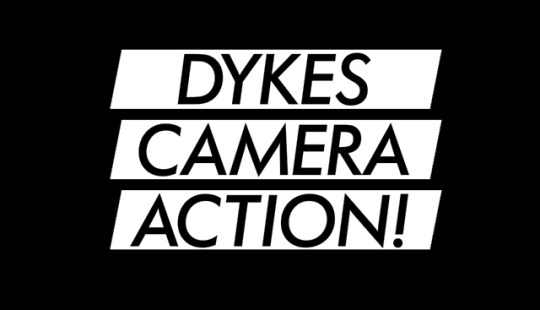
Dykes, Camera, Action! dir. Caroline Berler (2018)
A history of queer cinema from the women who made it happen.
120 notes
·
View notes
Text
title: ovary action
summary:
You squint at her. “You know, just because you, personally, don’t get your period doesn’t mean you can’t show a bit of sympathy.”
“Go ahead, bring up my traumatic forced sterilisation.”
notes: sfw mediocre gfs fluff where ur on ur period and nats, for once, an above average gf
inspired by conversations with @ataraxyaz
“Babe.”
Nat doesn’t look away from her laptop. You huff and slap your hand on her keyboard, rolling away when she immediately goes to elbow your face.
“Baby.”
Nat sighs loudly, shuts the lid of her laptop, and turns to scowl at you. “What?”
“I’m suffering,” you groan.
“Okay?”
You squint at her. “You know, just because you, personally, don’t get your period doesn’t mean you can’t show a bit of sympathy.”
“Go ahead, bring up my traumatic forced sterilisation.” Nat pulls the blanket down from your chin just so you can see how hard she rolls her eyes. “Do you want me to get you painkillers or something?”
“Yes,” you say, giving her your best attempt at puppy eyes. “Can you also go to the store and get pads?”
She sighs and gets out of bed. “Why do I date women?”
“Because you’re a dyke.”
“Who asked,” she mutters as she tugs on her pants and socks, and grabs her wallet.
“Why did I agree to date you? You’re not even funny,” you grumble, yanking the blanket over your head again. It hurts. So. Very. Badly. “You can’t even carry my kids.” You’re being a bitch. You know you’re being a bitch. Nat started it, though.
“Says the bottom with a breeding kink,” Nat shoots back. “I nearly lost a leg once. And died. Multiple times. Did I complain this much? No. Did I stop you from filing classified paperwork for your world-saving job? No. Did I-”
“I’m going to bleed on the sheets and be in too much pain to wash them if you don’t hurry up.” You poke your head out the sheets to glare at her. “So quit bitching, Ms Dominant and Infertile.”
“Cunt.”
“Don’t need the reminder,” you reply, airy, “It’s making its presence known to me. Painfully.”
The click of the door closing shut is her response to that.
//
It’s been an hour since Nat left. Way too long. This is when your arm sticks out from your bed and bangs around the side table for your phone. You drag it into your little hole and squint at the screen. Ah, 3 missed calls. You FaceTime her back, and she picks up immediately, looking annoyed and awfully cute. The camera flips to show a shelf of female sanitary products.
“What size pussy are you,” she says by way of greeting.
For a moment, the humour you’re feeling rushes through you and drowns out the cramps. Nat puts up with your chortling for all of two seconds before she hangs up.
You call her again. She picks up.
“I hate you,” she says, face blank.
You smile beautifully at her. “I love you so much.”
Her lips wobble, fighting a self-defeated smile. It ends up as a faint grimace. “Okay.”
You don’t push. Instead, you walk her through which size pads you need and talk her into buying a family size bag of candy too. The call keeps going even after she’s paid and begun her walk back. It’s a muggy day today, and she makes no effort to keep the camera still, so you’re treated to a view of grey skies and the occasional errant strand of red hair.
“Natty,” you call for her, voice meek.
The top half of her head comes into view, and she raises an eyebrow. “What’s up?”
“I miss you,” you mumble into her pillow. “Come back.”
Another roll of her eyes. Her most-used expression around you, probably. “I’m literally on my way.”
“You’re so warm. Now, I’m cold.” Dramatically, you fling the blanket off yourself and make a show of picking her pillow up and hugging it to yourself. “Woe is me!”
Nat laughs, the sound tinny coming through the mic. “Okay, okay. Needy baby.”
“I need you,” you whine.
“I’m at the door. Chill.”
“Chill? I just said I’m cold. You’re so toxic.”
Nat doesn’t even dignify that with a response. You are hung up on for the second time. A moment later, you hear the front door unlocking and the sound of her steady footsteps hitting the hallway floor. She comes in with a small smile and a plastic bag hooked on her elbow.
“Go change your pad. I’m going to get you some warm water,” she tells you as she tosses the plastic bag on the lump under the blankets.
You go to say something about that, but she’s already out the door. So, sluggish, you do as told, hunching your way into the bathroom.
Nat’s peeling the blankets back when you emerge, patting the spot next to her. You crawl in, circling her waist with a whimper. She hums and strokes her fingers over your face.
“Come on.” She pats your back. “Get up.”
With great reluctance, you sit up and let her feed you two pills and some water. The moment you’ve swallowed, you’re burrowing back into her, forcing her to lie down with you.
“Sorry for being a bitch,” you whisper into her clavicle.
Nat shrugs. “That’s okay.”
“I love you.”
Nat hums again and drags the blanket over your bodies. “Yeah.”
She loves you too. Why else would she put up with you? You think you should ask her to move in officially—your stomach twinges from the cramps—you’ll bring it up another time.
#uhh#natasha romanov x reader#natasha x reader#natasha romanoff x reader#natasha romanoff#marvel#nat#mw#i should have a tag for the mediocre gfs verse#ugh ill make a masterlist at some point#sfw
706 notes
·
View notes
Text
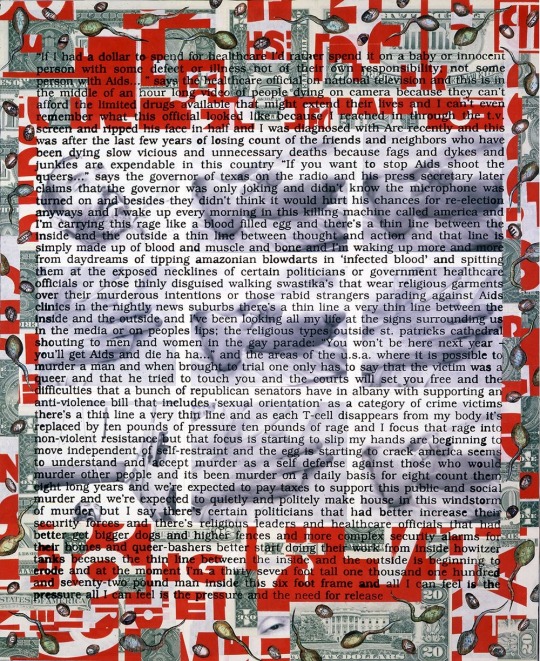
david wojnarowicz, untitled (hujar dead), 1988-89.
[image id: a collage piece by artist david wojnarowicz with a series of nine black-and-white photos of his lover and mentor photographer peter hujar on his deathbed in its center bordered by images of sperm layered over cutouts from twenty-dollar bills and indecipherable red lettering all overlaid with text by wojnarowicz that reads,
“If I had a dollar to spend for healthcare I’d rather spend it on a baby or innocent person with some defect or illness not of their own responsibility; not some person with Aids…” says the healthcare official on national television and this is in the middle of an hour long video of people dying on camera because they can’t afford the limited drugs available that might extend their lives and I can’t even remember what his official looked like because I reached in through the t.v. screen and ripped his face in half and I was diagnosed with Arc recently and this was after the last few years of losing count of the friends and neighbors who have been dying slow and vicious and unnecessary deaths because fags and dykes and junkies are expendable in this country “If you want to stop Aids shoot the queers…” says the governor of texas on the radio and his press secretary later claims that the governor was only joking and didn’t know the microphone was turned on and besides they didn’t think it would hurt his chances for re-election anyways and I wake up every morning in this killing machine called america and I’m carrying this rage like a blood filled egg and there’s a thin line between the inside and the outside a thin line between thought and action and that line is simply made up of blood and muscle and bone and I’m waking up more and more from daydreams of tipping amazonian blowdarts in ‘infected blood’ and spitting them at the exposed necklines of certain politicians or government healthcare officials or those thinly disguised walking swastika’s that wear religious garments over their murerous intentions or those rabid strangers parading against Aids clinics in the nightly news suburbs there’s a thin line a very thin line between the inside and the outside and I’ve been looking all my life at the signs surrounding us in the media or on peoples lips; the religious types outside st. patricks cathedral shouting to men and women in the gay parade: “You won’t be here next year—you’ll get Aids and die ha ha…” and the areas of the u.s.a. where it is possible to murder a man and when brought to trial one only has to say that the victim was a queer and that he tried to touch you and the courts will set you free and the difficulties that a bunch of republican senators have in albany with supporting an anti-violence bill that includes ‘sexual orientation’ as a category of crime victims there’s a thin line a very thin line and as each T-cell disappears from my body it’s replaced by ten pounds of pressure ten pounds of rage and I focus that rage into non-violent resistance but that focus is starting to slip my hands are beginning to move independent of self-restraint and the egg is starting to crack america seems to understand and accept murder as a self defense against those who would murder other people and its been murder on a daily basis for eight count them eight long years and we’re expected to pay taxes to support this public and social murder and we’re expected to quietly and politely make house in this windstorm of murder but I say there’s certain politicians that had better increase their security forces and there’s religious leaders and heathcare officials that had better get bigger dogs and higher fences and more complex security alarms for their homes and queer-bashers better start doing their work from inside howitzer tanks because the thin line between the inside and the outside is beginning to erode and at the moment I’m a thirty seven foot tall one thousand one hundred and seventy-two pound man inside this six foot frame and all I can feel is the pressure all I can feel is the pressure and the need for release.”]
#anyone else waking up every day in this killing machine called america carrying rage like a blood filled egg. anybody#aids media#david wojnarowicz#death tw#homophobia tw#ask to tag.
98 notes
·
View notes
Text
Press/Gallery: How Elizabeth Olsen Brought Marvel From Mainstream to Prestige
“The thing I love about being an actor is to fully work with someone and try so hard to be at every level with them, chasing whatever it is you need or want from them.”





GALLERY LINKS
Studio Photoshoots > 2021 > Session 008
Magazine Scans > 2021 > Backstage (August 19)
Backstage: Elizabeth Olsen grins widely over video chat when recalling many such moments on set with her co-stars. Yet, she can’t bring herself to divorce such a lofty vision of film acting from the technical multitasking it requires. The camera sees all.
“But then you move your hair, and you’re in your brain, like: OK, remember that! Because I don’t want to edit myself out of a shot. I know some actors are like, ‘Continuity, shmontinuity!’ But the good thing about continuity is, if you remember it, you’re actually providing yourself with more options for the edit.”
That need to balance being both inside the scene and outside of it, fully living it and yet constantly visualizing it on a screen, feels particularly apt in light of Olsen’s most recent project, “WandaVision.”
The mysteries at the heart of the show grow with every episode, each fast-forwarding to a different decade: Could this 1950s, black-and-white, “filmed in front of a studio audience” newlyweds bit be a grief-stricken dream? Might this ’70s spoof be a powerful spell gone awry? Could this meta take on mockumentary comedies be proof that the multiverse is finally coming to the Marvel Cinematic Universe?
The series’ structure, which branches out to include government agents intent on finding out why Westview has seemingly disappeared, calls for the entire cast to play with a mix of genres, balancing a shape-shifting tone that culminates in an epic, MCU-style conclusion. What’s key—and why the show struck a chord with audiences during its nine-episode run—is the miniseries’ commitment to grounding its initial kooky setups and its later special effects-driven spectacle in heartbreaking emotional truths. It’s no small feat, though it’s one that can often be taken for granted.
“I was thinking how hard it would have been to have shot the first ‘Lord of the Rings,’ ” Olsen muses. “Like, you’re putting all these actors [into the frame] later and at all these different levels. All the eyelines are completely unnatural. And yet the performances are fantastic! And technically, they are so hard. People forget sometimes that these things are really technically hard to shoot. And if you are moved by their performance, that took a lot of multitasking.”
As someone who has learned plenty about harnesses, wirework, fight choreography, and green screens (she’s starred in four Marvel movies, including the box office megahit “Avengers: Endgame,” after all), Olsen knows how hard it can be to wrap one’s brain around the work needed to pull off those big, splashy scenes.
“If you think about it, it’s, like, the biggest stakes in the entire world—every time. And that feels silly to act over and over again, especially when people are in silly costumes and the love of your life is purple and sparkly, and every time you kiss them, you have to worry about getting it on your hands. Those things are ridiculous. You feel ridiculous. So there is a part of your brain that has to shovel that away and just look into someone’s eyeballs—and sometimes, they don’t even have eyeballs!”
The ability to spend so much time with Wanda, albeit in the guise of sitcom parodies, was a welcome opportunity for Olsen. Not only did it allow the actor to really wrestle with the traumatic backstory that has long defined the character in the MCU, but having the chance to calibrate a performance that functions on so many different levels was a thrilling challenge.
“It was such an amazing work experience,” she says. “Kathryn [Hahn] uses the word ‘profound’—which is so sweet, because it is Marvel, and people, you know, don’t think of those experiences as profound when they watch them. But it really was such a special crew that [director] Matt Shakman and [creator] Jac Schaeffer created. It was a really healthy working environment.”
Related‘WandaVision’ Star Kathryn Hahn’s Secret to Building a Scene-Stealing Performance
‘WandaVision’ Star Kathryn Hahn’s Secret to Building a Scene-Stealing Performance
Considering that the miniseries spans several sitcom iterations, various layers of televisual reality, and a number of character reveals that needed to feel truthful and impactful in equal measure, Shakman’s decision to work closely with his actors ahead of shooting was key.
“We truly had a gorgeous amount of time together before we started filming,” Olsen remembers. “Our goal was—which is controversial in TV land—that if you wanted to change [anything], like dialogue in a scene, you had to give those notes a week before we even got there. Because sometimes you get to set, and someone had a brilliant idea while they were sleeping, and you’re like, ‘We don’t have an hour to talk about this. We have seven pages to shoot.’ And so, we were all on the same page with one another, knowing what we were shooting ahead of time.
“Matt just treated us like a troupe of actors who were about to do some regional theater shit,” she adds with a smile.
That spirit of camaraderie was, not coincidentally, at the heart of Olsen’s breakout project, Sean Durkin’s 2011 indie sensation “Martha Marcy May Marlene.” As an introduction to the process of filmmaking to a young stage-trained actor, Durkin’s quietly devastating drama was a dream—and an invaluable learning opportunity.
“It was truly just a bunch of people who loved the script, who just were doing the work. I didn’t understand lenses, so I just did the same thing all the time. I never knew if the camera would be on me or not. There was just so much purity in that experience, and you only have that once.”
The film announced Olsen as a talent to watch: a keen-eyed performer capable of deploying a stilted physicality and clipped delivery, which she used to conjure up a wounded girl learning how to shake off her time spent in a cult in upstate New York. But Olsen admits that it took her a while to figure out how to navigate her career choices afterward. In the years following “Martha,” she felt compelled to try on everything: a horror flick here, a high-profile remake there, a period piece here, an action movie there. It wasn’t until she starred in neo-Western thriller “Wind River” (alongside fellow Marvel regular Jeremy Renner) and the dark comedy “Ingrid Goes West” (opposite a deliciously deranged Aubrey Plaza) that Olsen found her groove.
“It was at that point, when I was five years into working, where I was like, Ah, I know how I want it. I know what I need from these people—from who’s involved, from producers, from directors, from the character, from the script—in order to trust that it’s going to be a fruitful experience.”
As Olsen looks back on her first decade as a working actor, she points out how far removed she is from that young girl who broke out in “Martha Marcy May Marlene.”
“I feel like a totally different person. I don’t know if everyone who’s in their early 30s feels like their early 20s self is a totally different human. But when I think about that version of myself, it feels like a long time ago; there’s a lot learned in a decade.”
Those early years were marked by a self-effacing humility that often led Olsen to defer to others when it came to key decisions about the characters she was playing. But she now feels emboldened to not only stand up for herself and her choices but for others on her sets as well.
“[Facebook Watch series] ‘Sorry for Your Loss’ I got to produce, and I really found my voice in a collaborative leadership way. And with ‘WandaVision,’ Paul [Bettany] and I really took on that feeling, as well—especially since we were introducing new characters to Marvel and wanted [those actors] to feel protected and helped,” she says. “They could ask questions and make sure they felt like they had all the things they needed because sometimes you don’t even know what you need to ask.”
It’s a lesson she learned working with filmmaker Marc Abraham on the Hank Williams biopic “I Saw the Light,” and she’s carried it with her ever since. “I really want it to feel like we’re all in this together, as a team,” Olsen says. “That was part of ‘Sorry for Your Loss’ and it was part of ‘WandaVision,’ and I hope to continue that kind of energy because those have been some of the healthiest work experiences I’ve had.”
If Olsen sounds particularly zealous about the importance of a comfortable, working set, it is because she’s well aware that therein lies an integral part of the work and the process. As an actor, she wants to feel protected and nurtured by those around her, whether she’s reacting to a telling, quiet line of dialogue about grief or donning her iconic Scarlet Witch outfit during a magic-filled mid-air action sequence.
“Sometimes you’re going to be foolish, you know? And [you need to] feel brave to be foolish. Sometimes people feel embarrassed on set and snap. But if you’re in a place where people feel like they’re allowed to be an idiot,” she says, “you’re going to feel better about being an idiot.”
This story originally appeared in the Aug. 19 issue of Backstage Magazine. Subscribe here.
Press/Gallery: How Elizabeth Olsen Brought Marvel From Mainstream to Prestige was originally published on Elizabeth Olsen Source • Your source for everything Elizabeth Olsen
#Elizabeth Olsen#WandaVision#Avengers#Scarlet Witch#Wanda Maximoff#Sorry For Your Loss#Avengers Infinity War#Avengers Age of Ultron#Captain America Civil War#Ingrid Goes West#Godzilla#Doctor Strange in the Multiverse of Madness#Marvel#MCU#Candy Montgomery#Love and Death#Avengers Endgame
48 notes
·
View notes
Text
I hate ciset men 🤡
Tw// mentions of SA, rape, pedophilia, un-wanted nudes, homophobia/transphobia.
Time to rant. So just for some background, I am an AFB nonbinary sapphic. I define my gender as being non-existent and just me, and my sexuality being that I am attracted to more feminine individuals. I do date women and nonbinary people but when it comes to men I am more asexual towards. I do find attraction in men but it is so little and is only towards my really close male friends but even still I wouldn’t date them. I have also had some really bad experiences when it comes to dealing with men. I have been sexually assaulted multiple times by a couple boys when I was younger and have been sexually harassed online and in person by adult men and boys alike. I don’t feel comfortable around men and even my guy friends are held at arms length.
Now here comes the rant part. Why do men act so entitled and think that you owe them sex? I am a minor (16 turning 17 on July 23rd) which is illegal (in my country) for me to receive nudes and to send nudes of myself to people.
On my Instagram account I have recently just got 500 followers, a great milestone for an introverted geek such as myself. But when I hit that milestone, I had started to receive really gross texts from adult men and even an 39 year old woman who then proceeded to send a video of her f*ngering herself. Ofc, as a human literally just breathing, I found this quite disgusting. I even had this random man threaten to rape and kill me and my family if I didn’t send him any nudes. Even after me telling him it was illegal, I was a lesbian and I didn’t want to, he still kept threatening me. Mind you, my age is in my bio, and so is my sexuality and pronouns. If these creeps actually did check my bio, they would know that I am a minor and a lesbian. I don’t even post provocative stuff on there, it’s literally me trying out different outfits and makeup looks or pictures with my friends. I don’t even have bikini pics so I’m not even close to “asking for it”. I do understand that even if a minor posts “provocative content” that they don’t deserve sexual harassment. Bikini pics don’t make you a slut and neither does posting a bit of cleavage. I only mentioned that in the rant to diminish the argument of “you were wearing THAT so you were asking for it”. Clothings does not equal consent. Now the reason for the title is because the majority of these messages I get are from men which ends up with them threatening me. It’s the idea that these men and boys make sock puppet accounts to prey on young children who appear feminine and even go to sexualize them even further when they say they are lesbian. And in the end, shortly after I hit 500 followers, I make a story saying that I’m going on hiatus because of mental health and the sexual harassment I receive on Instagram. I shouldn’t be worrying about men coming to threaten and possibly rape and kill me, I should be worrying when the next sims 4 game pack is coming out and if it’s worth buying it. Children shouldn’t be worried about being traumatized.
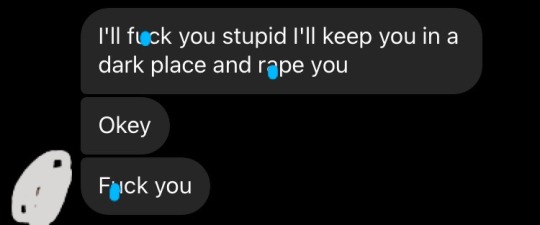
Now is the next part of the rant, the “ciset” part of the title. To my knowledge, ciset means a straight cis person. This means that they identify as their gender assigned at birth and their sexuality is straight. All of the men that text me are ciset identifying and tend to make homophobic comments while talking to me. It isn’t uncommon for me to be called a dyke or a f*g and being threatened to be raped shortly afterwards because of it. I also receive transphobic comments because in my bio I have they/them set as my pronouns. Another homophobic action that they do is that they love to sexualize my sexual identity. I even had a man lie and pretend to be a trans woman to try to convince me to join a sexual group chat of lesbians who were minors. It was proven later that this man admitted to identifying as male. With the homophobic comments, I have also had answers where I had asked someone for their sexuality and they had replied mockingly “Christian” or “Hindu”. This isn’t okay and it’s a reoccurring thing on Instagram. This is also a thing on tumblr too, literally on the day that I “returned to tumblr” I was never on it in the first place, just had an account I see two women covered in a white substance in their oral area, the camera shot bust up, proceed to lick each other’s tongues in a sexualize way while the one on the right grabs the left’s breast. The only reason why I had seen this post was because I follow the hashtag “grunge aesthetic”. Lesbians aren’t your porn and fetish.
As of this I am done my rant. Idc if I get any hate comments or if someone happens to message me hate. You are only part of the problem and just prove it by making those comments. I also want to mention that I am not fishing for pity points. I am simply just addressing the issue at hand and using my platform although small to spread awareness to the subject.
Now it’s that, I hope you all have a good day and drink some water 🥰
#i hate it here#i hate cishets#i hate cis people#i hate men#feminisim#gay rant#gay rights#are the straights okay#sapphic#wlw#wlw blog#wlw tag#sapphism#i love women#queer artist#queer representation#non biney#non binary#demi girl#transmasc#trans pride#transfeminine#trans rights
25 notes
·
View notes
Text
rocketship b&s lucksmiths tidy ups icicles razorcuts june brides jazz butcher railway children close lobsters brilliant corners weather prophets another sunny day even as we speak brighter sweetest ache hit parade flatmates girlboy girl smittens la casa azul marshmallow kisses smile & a ribbon asobi seksu 2 camera obscura niza st etienne the tuts tacocat vivian girls shermans holiday flyer helen love colourfield roger nichols tully god help clientele field mice 3 heavenly pipas would be goods language of flowers annemarie sunny summer day my little airport pearlfishers souvenir bunnygrunt brilliant colors northern picture library allo darlin kimya isobel tv personalities le mans the school pains 4 astrud strawberry whiplash teenage fanclub beat blueboy boyracer plumtree cub oj wedding present black tambourine swirlies tiger trap softies pastels brave irene b'ehl aberdeen comet gain boy crazy yearning trembling postmarks acid house darling buds boy least likely cecila ann apartments club 8 sambassadeur 5 brittle stars 14 iced brideshead shoestrings fairways math & physics ladybug circulatory system apples in stereo high water marks velocity girl aislers set talulah gosh blake babies northern portrait saturday looks good monochrome set dolly mixture shop assistants secret shine 6 elf power electric pop group bubblegum lemonade mccarthy bmx bandits sweater girls red house painters el perro del mar jens red sleeping beauty snow fairies happy couple saturday people juniper moon cinnamon 7 sunshine fix cats on fire girls at our best aztec camera anorak girl supercute second-hand furniture castaway stones evening lights glo-worm crooner modesty blaise happydeadmen james dean driving biff bang popguns eggstone birdie cardigans van dyke vaselines orchids rose melberg 8 olivia tremor kleenex/liliput laura watling cloudberry jam popsicle wannadies maybellines crabs lois gaze bartlebees proctors japanese heart software blue aeroplanes beths sea urchins 9 hey paulette mighty mighty one thousand violins sugargliders komeda cannanes arctic flow st christopher soup dragons style council lightning seeds boo radleys primitives trashcan sinatras chesterfields groove farm this poison magnetic fields 6ths beatnik filmstars everything but tracey neutral milk nightingales bristols ludus raincoats cadallaca johnny boy leslies pale fountains wild swans pram peel dream magazine galaxie i ludicrous pylon 10 milkyway free loan investments dressy bessy marine girls housemartins mighty lemon drops ladylike lily pooh sticks marine research tender trap eux autres besties aluminum group doggy occasional flickers frenchmen holiday pants yell bleached josef k barcelona benett dentists primal scream liechtenstein veronica falls dum dum girls seapony loveninjas spring reds pinks & purples fastbacks pop tarts brainpool wake springfields telephone numbers action painting poppyheads chills aden 11 lloyd cole beautiful south house of love wolfhounds worriers suburban kids cats miaow able action biker rosemarys children marden hill always dislocation dance king of luxembourg anthony adverse eggs a house kincaid standard fare just joans 12 future bible heroes delmonas headcoatees shout out louds concretes feelies perfect kiss band a part cola jet set modular cristina quesada magic theatre edine avec marine life jessica & the fletchers dont cry shopgirl keep left signs girlatones nancy sin de viaje las annettes carrots garlands makeout vertigo youdometoo ruskettes fitness forever papa topo entre rios alisons halo astrobrite all about chad amber smith apple orchard beulah aquadays purelove elegant bomb pops jasmine minks
4 notes
·
View notes
Text
A Review of “WandaVision (2021)”
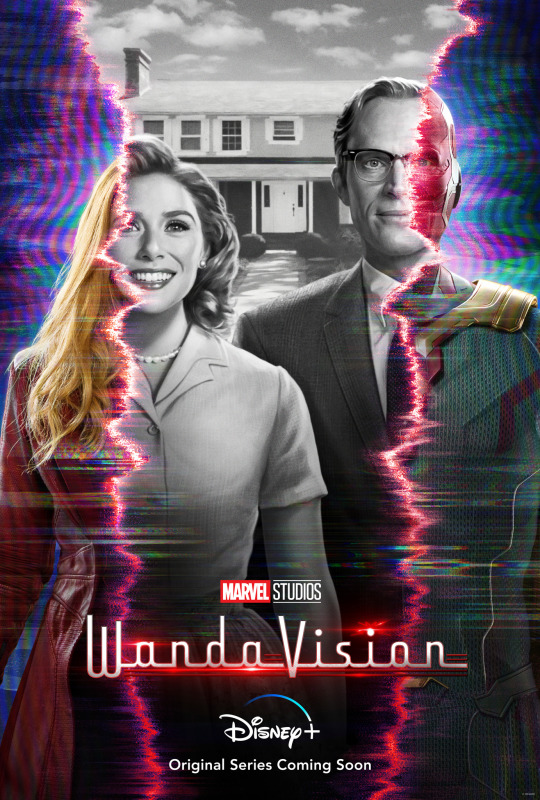
WandaVision is the first in Marvel's line of TV streaming shows. Wanda and Vision haven't been in the spotlight since Age Of Ultron, so a series fully dedicated to these two were very interesting. "Set three weeks after the events of Avengers: Endgame (2019), Wanda Maximoff and Vision are living an idyllic suburban life in the town of Westview, New Jersey, trying to conceal their true natures. As they begin to enter new decades and encounter television tropes, the couple suspects that things are not as they seem". I'm a big MCU fan and after Endgame Vision was still pretty much dead so this series bringing him back alive piqued my interest. So is this a great start for MCU TV shows or a big slip up for Marvel?

Firstly, the concept of a Superhero Sitcom with a bit of mystery is such a unique concept for the Superhero genre. Marvel is one of the biggest names nowadays and they make very entertaining movies, but it can feel a bit formulaic. However, WandaVision takes a risk by doing something drastically different and it executes it marvellously. I'll admit I'm not the biggest fan of Sitcoms but some great moments gave me quite the chuckle. WandaVision goes through multiple eras of sitcoms from "The Dick Van Dyke Show" to "Full House" to "Malcolm in the Middle" to "The Office" and they replicate it very well. The showrunner knew their Sitcoms and WandaVision conveys this.

Additionally, I love how they use different cameras, different colours and different resolutions for what Sitcom era they are on or changes to a cinematic look for characters outside the Sitcom stuff. There is also clearly a lot of work put into the set design and costumes to replicate these eras as well. Near the last couple of episodes when it goes full Marvel movie there are some great VFX for the action set-pieces as well.

The characters in this series are also all great. Wanda (Elisabeth Olsen) returns and is a lot more on edge compared to the movies. Likewise, Vision (Paul Bettany) was always the cool but slightly awkward Robot guy in the movies but here feels a lot more personality than we have ever seen before. Both Elisabeth Olsen and Paul Bettany did a great job with these characters in the movies but here they genuinely give some of the best performance I've seen in any Marvel project. Darcy Lewis (Kat Dennings) returns from the Thor movies and is now more than just a side lady who quips a lot but feels more knowledgeable and helpful albeit still very funny. Jimmy Woo (Randall Park) returns from Ant-Man and the Wasp and gets to be more on the heroic side and does some cool stuff. Monica Rambeau (Teyonah Parris) returns from Captain Marvel and is now all grown up and played by a different actor who does a phenomenal job in giving a cool, badass character. Agnes (Kathryn Hahn) is a new supporting character who is very funny as the nosy neighbour with a high libido.

The story is also very engaging with the subtle weirdness that occurs in each episode. I won't go into spoiler territory but there is some great twist in this series. Some emotional moments were very effective in hitting me in the core, especially the last couple of episodes. I also really love that there are adverts that were created specifically for the series that adds another layer to the titular character and the story.
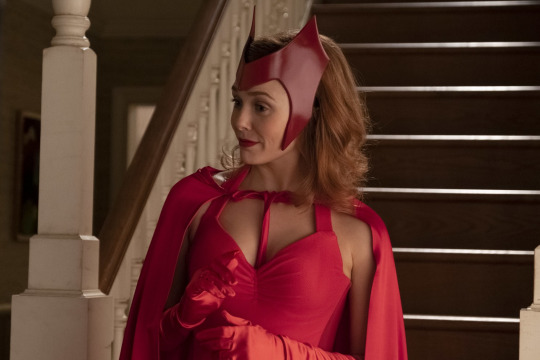
Nonetheless, I have some minor gripes with the series and that it is a very slow burn of a series. It takes quite a while for it to kick into gear in my opinion. The first 3 episodes don't have much happening and it is understandable because the series meant to start more on the sitcom side of things but it does get to points where you're hoping whether something will happen or not. There are also some things in the story near the end that were kind of underwhelming. Without spoiling it is a revelation of a certain character and another character who just appears and then mysteriously disappears for some reason. It just raised a lot of eyebrows in my opinion. Additionally, there is one supporting character I just feel is very weak in terms of character and motives. Tyler Hayward (Josh Stamberg) is the acting director of S.W.O.R.D who just has vague reasons for what he does and I wish they gave more backstory and depth to him because in the end he just feels like an obstacle. After all, the plot needed it to be.

Overall, this is a great start for MCU TV streaming shows. WandaVision does something new with the genre and delivers on it. It also successfully makes us love Wanda and Vision even more. Like most Marvel movies, the ending leads to a lot of interesting possibilities. I thought that Endgame might be it for me for the MCU but WandaVision manages to convince me to continue to keep track of the MCU. If this is the quality of Marvel TV shows then I am looking forward to the next one.

#marvel#tv show#sitcom#wandavision#marvel cinematic universe#mcu#wanda maximoff#vision#Disney#disney plus#x men#Avengers#scarlet witch#quicksilver
9 notes
·
View notes
Link
How the US government destroyed the social-political movements of the 1960s-1970s.
Posted on
November 1, 2017
by
the truth is freedom
Counterintelligence Program [Cointelpro]: The United States government program that destroyed the social and political movements of the 1960s and 1970s
Table of Contents
Counterintelligence Program [Cointelpro] operations in general
Specific covert actions against La Raza
III. Domestic covert action remains a serious threat today
Domestic covert action did not end in the 1970’s
“Bags of dirty tricks”
Counter Intelligence Program (Cointelpro) Operations in General
How the Cointelpro program destroyed the progressive social and political movements of the 1960s and 1970s in the United States
Since Cointelpro was used mainly against the progressive movements of the 1960s and 1970s its impact can be grasped only in the context of the momentous social upheaval which shook the country during those years. Chicano and black communities throughout the United States [US] came alive with renewed political struggle. Most major cities experienced sustained disciplined Chicano and black protests and massive barrio and ghetto uprisings. Chicano and black activists galvanised multi-racial rebellion among welfare mothers, students, and prisoners. College campuses and high schools erupted in militant protest against the war in Vietnam. A predominantly white New Left inspired by Chicano and black movements fought for an end to US intervention abroad and a more humane and co-operative way of life at home. By the late 1960s deep-rooted resistance had revived among Puerto Ricans and Native Americans. Millions of people began to reject the dominant ideology and culture plus thousands challenged basic US political and economic institutions. For a brief moment “the crucial mixture of people’s confidence in the government and lack of confidence in them which allows the government and the ruling class to rule threatened to break down.” By the mid-1970s the upheaval had largely subsided. Important progressive activity persisted, mainly on a local level and much continued to be learned and won, but the massive, militant Chicano, black and new left movements were gone. The sense of infinite possibility and of our collective power to shape the future had been lost.
Progressive momentum dissipated and radicals found themselves on the defensive as right-wing extremists gained major government positions and defined the contours of accepted political debate. Many factors besides Cointelpro contributed to this change. Important progress was made toward achieving movement goals to the war in Viet Nam and university reform. The mass media owned or controlled mainly by Jews and their big business and cowed by government and right-wing attacks helped to bury radical activism by ceasing to cover it. Television, popular magazines, and daily papers stereotyped activists as hardened criminals and welfare chiselers or as the supposedly affluent beneficiaries of “reverse discrimination;” white radical and leftist youth were portrayed first as hedonistic hippies and mindless terrorists, later as an apolitical, self-indulgent “me generation” and both were scapegoat as threats to “decent and hard-working middle America.”
During the severe economic recession of the early to mid 1970s former student activists began entering the job market some by taking on responsibility for children. Many were scared by brutal government and right-wing attacks culminating in the murder of rank-and-file activists as well as prominent leaders. Some were strung out on hard drugs that had become increasingly available in black and Latino communities and among white youth. Others were disillusioned by mistreatment in movements ravaged by the very social sicknesses they sought to eradicate such as racism and class bias. Limited by their upbringing, social position, and isolation from older radical traditions, 1960s activists were unable to make the connections and changes required to build movements strong enough to survive and eventually win structural change in the US. Middle-class students did not sufficiently ally with working and poor people and too few white activists accepted third world leadership of multi-racial alliances. Originally motivated by goals of quick reforms, 1960s activists were ill prepared for the long-term struggles in which they found themselves. Overly dependent on media-oriented “superstars” and one-shot dramatic actions, they failed to develop stable organisations, responsible leadership, and strategic perspective. Creatures of the culture they so despised, they often lacked the patience to sustain tedious grassroots work and painstaking analysis of actual social conditions. They found it hard to accept the slow uneven pace of personal and political change. This combination of circumstances, however, did not by itself guarantee political collapse.
The achievements of the 1960s movements inspired optimism and provided a sense of the power to win other important struggles. The rightward shift of the major media could have enabled alternative newspapers, magazines, theatre, film, and video to attract a broader audience and stable funding. The economic downturn of the early 1970s could have united Chicano and black militants, new leftists, and workers in common struggle. Police brutality and government collusion in drug trafficking could have been exposed in ways that undermined support for the authorities and broadened the movement’s backing. While the problems of the 1960s movements were enormous, their strengths might have enabled them to overcome their weaknesses had the upsurge not been stifled before activists could learn from their mistakes. Much of the movement’s inability to transcend their initial limitations and overcome adversity can be traced to Cointelpro. It was through Cointelpro that the public image of Chicanos, blacks and new leftists was distorted to legitimise their arrest and imprisonment and scapegoat them as the cause of working people’s problems. The FBI and police instigated violence and fabricated movement horrors; dissidents were deliberately criminalized through false charges, frame-ups, and offensive bogus leaflets and other materials published in their name. This is why and how Ramsey Muñiz of La Raza Unida Party was framed! [See part V “bag of dirty tricks.”] Cointelpro enabled the FBI and police to exacerbate the movement’s internal stresses until beleaguered activists turned on one another. Whites were pitted against blacks, blacks against Chicanos and Puerto Ricans, students against workers, workers against people on welfare, men against women, religious activists against atheists, Christians against jews, jews against Muslims, while “anonymous” accusations of infidelity ripped couples apart. Backers of women’s and gay movements were attacked as “dykes” and “faggots.” Money was repeatedly stolen and precious equipment sabotaged to intensify pressure and sow suspicion and mistrust. Otherwise manageable disagreements were inflamed by Cointelpro until they erupted into hostile splits that shattered alliances, tore groups apart, and drove dedicated activists out of the movement. Government documents implicate the FBI and police in the bitter break-up of such pivotal groups as the La Raza Unida Party, the Brown Berets, Black Panther Party, Students for Democratic Society (SDS), the Liberation News Service, and in the collapse of repeated efforts to form long-term coalitions across racial, class, and regional lines. While genuine political issues were often involved in these disputes, the outcome could have been different if government agencies had not covertly intervened to subvert compromise and fuel hostility and competition. Finally, it was Cointepro that enabled the FBI and police to eliminate mass movement leaders without undermining the image of the US as a “democracy” complete with free speech and the rule of law. Charismatic orators and dynamic organisers were covertly attacked and neutralised before their skills could be transferred to others and stable structures established to carry on their work.
Corky Gonzalez and Ramsey Muñiz were imprisoned and Malcolm X was murdered in a “factional dispute” which the FBI took credit for having developed in the Nation of Islam. Martin Luther King was the target of an elaborate plot to drive him to suicide and replace him “in his role of the leadership of the negro people” with conservative black lawyer Samuel Pierce [later named to Reagan’s cabinet]. Many have come to view King and Malcolm’s assassinations as in itself a domestic covert operation. Other prominent radicals faced similar attack when they began to develop broad followings and express anti-capitalist ideas. Some were portrayed as crooks, thugs, philanderers, or government agents, while others like David Sanchez of the Brown Berets were physically threatened or assaulted until they abandoned their work. Still others were murdered under phoney pretexts such as “shootouts” in which the only shots were fired by the police. To help bring down a major target, the FBI often combined these approaches in strategic sequence. Take the case of the underground press, a network of some 400 radical weeklies and several national news services, which once boasted a combined readership of close to 30 million. In the late 1960s, government agents raided the offices of alternative newspapers across the country in purported pursuit of drugs and fugitives. In the process, they destroyed typewriters, cameras, printing presses, layout equipment, business records, and research files, and roughed up and jailed staffers on bogus charges. Meanwhile, the FBI was persuading record companies to withdraw lucrative advertising and arranging for printers, suppliers, and distributors to drop underground press accounts. With their already shaky operations in disarray, the papers and news services were easy targets for a final phase of Cointelpro disruption. Forged correspondence, anonymous accusations, and infiltrator manipulation provoked a flurry of wild charges and countercharges that played a major role in bringing many of these promising endeavours to a premature end. A similar pattern can be discerned from the history of the La Raza Unida and Black Panthers. Brutal government attacks initially elicited broad support for these new militant and highly visible national organisations and their popular programs for self-determination. But the repressive onslaught severely weakened these Parties making them vulnerable to sophisticated psychological warfare which so discredited and shattered them to such an extend, that only a few people today have any notion of the power and potential that these organisations once represented. What proved most devastating in all of this was the effective manipulation of the victims of Cointelpro into blaming themselves. Since the FBI and police operated covertly, the horrors they engineered appeared to emanate from within the movements. Activists trust in one another and their collective power was subverted and the hopes of a generation died, leaving a legacy of cynicism and despair which continues to haunt us today.
Specific operations against La Raza
La Raza Unida Party of Texas was plagued with repeated unsolved Cointelpro-style political break-ins. Former government operative Eustacio “Frank” Martinez admitted that after the close of Cointelpro the Bureau of Alcohol, Tobacco, and Firearms (ATF) paid him to help destroy “La Casa del Carnalismo” [The House of Brotherhood] a Chicano community anti-drug program in Los Angeles. Martinez, who had previously infiltrated the Brown Berets and the Chicano Moratorium, stated that the ATF directed him to provoke bombings and plant a drug pusher inside of “La Casa del Carnalismo.”
In 1973, Chicano activist and Lawyer Francisco “Kiko” Martinez was indicted in Colorado on trumped-up bombing charges and suspended from the bar. He was forced to leave the country for fear of assassination by police directed to shoot him “on sight.” When Martinez was eventually brought to trial in the 1980s, many of the charges against him were dropped for insufficient evidence and local juries acquitted him of others. One case ended in a mistrial when it was found that the judge had met secretly with prosecutors, police, and government witnesses to plan perjured testimony, and had conspired with the FBI to conceal video cameras in the courtroom. A serious and damaging Cointelpro action against La Raza has been the framing of Ramsey Muñiz. Ramsey Muñiz was an effective leader of La Raza Unida Party in Texas and was its candidate for governor in 1974. Falling victim to trump up charges, Ramsey is now serving a life sentence without the possibility of parole at Leavenworth federal penitentiary. There is a strong movement underway to obtain his freedom and to release him from long term “solitary confinement” within the prison. Starting in 1976 the FBI manipulated the grand jury process to assault both the Chicano and Puerto Rican movements. Under the guise of investigating the Fuerzas Armadas de Liberación Nacional Puertorriqueña [FALN] and other Puerto Rican urban guerrillas, the bureau harassed and disrupted a cultural centre, an alternative high school, and other promising community organising efforts in Chicago and Puerto Rican barrios and in the Chicano communities of Denver and Northern New Mexico. It subpoenaed radical Puerto Rican trade union leader Federico Cintrón Fiallo, a key staff of the National Commission on Hispanic Affairs of the US Episcopal Church, to appear before federal grand juries and jailed him for refusing to cooperate. The independent labour movement in Puerto Rico and the Commission’s important work in support of Puerto Rican and Chicano organising were effectively discredited.
On July 25, 1978 an undercover agent lured two young Puerto Rican independence activists, Carlos Soto and Arnaldo Darío Rosado, to their deaths in a police ambush at Cerro Maravilla, Puerto Rico. The agent, Alexander Gonzalez Malave, worked under the direct supervision of the FBI trained intelligence chief of the island’s police force. The FBI refused to investigate when the police claimed they were merely returning gunfire initiated by the activists. Later it was proved that Soto and Dario had surrendered and were then beaten and shot dead while on their knees. Though a number of officers were found guilty of perjury in the cover-up and one was sentenced for the murder the officials who set up the operation remain free. Gonzalez was even promoted. On November 11, 1979 Angel Rodriguez Cristobal, a popular socialist leader of the movement to stop the US navy bombing practice on the inhabited Puerto Rican island of Vieques, was murdered in the penitentiary at Tallahassee, Florida. Although prison authorities claimed “suicide,” Rodriguez Cristobal in the second month of a six-month term for civil disobedience had been in good spirits when seen by his lawyer only hours before his death. He had been subjected to continuous threats and harassment including forced drugging and isolation during his confinement. Though he was said to have been found hanging by a bed sheet there was a large gash on his forehead and blood on the floor of his cell. Another front line organisation victim of Cointelpro type operations was the Brown Beret National Organisation. David Sanchez, its leader, was the victim of a Cointelpro “psychological war” against him. His home was fired bomb during the early 1970’s and this almost resulted in the death of his little sister. He had to disband the Berets during the upheavals of the National Chicano Moratorium Committee marches in East Los Angeles in order to stop the shedding of blood between some of the units. The disunity and division was caused by the infiltration of Cointelpro agents.
III. Domestic covert action remains a serious threat today
The public exposure of Cointelpro and other government abuses elicited a flurry of apparent reform in the 1970s. President Nixon resigned in the face of impeachment. His Attorney General, other top aides, and many of the “plumbers” were prosecuted and imprisoned for brief periods. The CIA director and counter-intelligence chief were ousted and the agency was directed to cease covert operations against domestic targets.
The FBI had formally shut down Cointelpro a few weeks after it was uncovered. As part of the general face-lift the bureau publicly apologised for Cointelpro and municipal governments began to disband the local police “red squads” that had served as the FBI main accomplices. A new attorney general notified several hundred activists that they had been victims of Cointelpro and issued guidelines limiting future operations. Top FBI officials were indicted for ordering the burglary of activists’ offices and homes, two were convicted, and several others retired or resigned. The bureau’s egomaniacal crudely racist, closet homosexual and sexist founder Edgar J. Hoover died in 1972. After two interim directors failed to stem the tide of criticism, a prestigious federal judge, William Webster, was appointed by President Carter to clean house and build a “new” FBI. Behind this public hoopla, however, the bureau’s war at home continued unabated. Domestic covert action did not end when it was exposed in the 1970s. It has persisted throughout the 1980s and become a permanent feature of the US government domestic policy.
Domestic covert action did not end in the 1970s
Director Webster’s highly touted reforms did not create a “new” FBI. They served mainly to modernise the existing bureau and to make it even more dangerous. In place of the backbiting competition with other law enforcement and intelligence agencies, which had previously impeded coordination of domestic counter-insurgency, Webster promoted inter-agency co-operation. Adopting the mantle of an “equal opportunity employer,” his FBI hired women and people of colour to more effectively penetrate a broader range of political targets. By cultivating a low-visibility image and discreetly avoiding public attack on prominent liberals, Webster gradually restored the bureau’s respectability and won over a number of its former critics. State and local police similarly upgraded their repressive capabilities in the 1970s while learning to present a more friendly public face. The “red squads” that had harassed 1960s activists were quietly resurrected under other names. Paramilitary police [swat] teams and tactical squads were formed, along with highly politicised “community relations” and “beat rep” programs featuring conspicuous Black, Chicano, and female officers. Generous federal funding and sophisticated technology became available through the law enforcement assistance administration, while FBI-led “joint anti-terrorist task forces” introduced a new level of inter-agency co-ordination. Meanwhile, the CIA continued to use university professors, journalists, labour leaders, publishing houses, cultural organisations, and philanthropic fronts to mold public opinion. At the same time, army Special Forces and other elite military units began to train local police for counter-insurgency and to intensify their own preparations, following the guidelines of the secret pentagon contingency plans called “garden plot” and “cable splicer.” They drew increasingly on manuals based on the British colonial experience in Kenya and Northern Ireland, which teach the essential methodology of Cointelpro under the rubric of “low-intensity warfare” and stress early intervention to neutralise potential opposition before it can take hold. While domestic covert operations were scaled down once the 1960s upsurge had subsided they did not stop. In its April 27, 1971 directives disbanding Cointelpro the FBI provided for future covert action to continue “with tight procedures to ensure absolute security.” The results are apparent in the record of 1970s covert operations, which have so far come to light.
The Native American Movement
The 1970s FBI attacks on resurgent Native American resistance have been well documented. In 1973, the bureau led a paramilitary invasion of the Pine Ridge Reservation in South Dakota as American Indian Movement [AIM] activists gathered there for symbolic protests at Wounded Knee, the site of an earlier massacre of Native Americans by whites. The FBI directed the entire 71-day siege deploying federal marshals, US army personnel, Bureau of Indian Affairs police, local Goons [Guardians of the Oglala Nation, an armed tribal vigilante force] and a vast array of heavy weaponry.
In the following years, the FBI and its allies waged all-out war on AIM and the Natives. From 1973-76 they killed 69 residents on the tiny Pine Ridge reservation, a rate of political murder comparable to the first years of the Pinochet regime in Chile. To justify such a reign of terror and undercut public protest against it, the bureau launched a complementary program of psychological warfare. Central to this effort was a carefully orchestrated campaign to reinforce the already deeply ingrained myth of the “indian savage.” In one operation the FBI fabricated reports that AIM “dog soldiers” planned widespread “sniping at tourists” and “burning of farmers” in South Dakota. The son of liberal Senator [and Arab-American activist] James Abourezk was named as a “gunrunner” and the bureau issued a nationwide alert picked up by media across the country. To the same end, undercover operatives framed AIM members Paul “Skyhorse” Durant and Richard “Mohawk” Billings for the brutal murder of a Los Ángeles taxi driver. A bogus AIM note taking credit for the killing was found pinned to a signpost near the murder site, along with a bundle of hair said to be the victim’s “scalp.” Newspaper headlines screamed of “ritual murder” by “radical indians.” By the time the defendants were finally cleared of the spurious charges, many of AIM’s main financial backers had been scared away and its work among a major urban concentration of native people was in ruin. In March of 1975, a central perpetrator of this hoax, AIM’s national security Chief Doug Durham, was unmasked as an undercover operative for the FBI. As AIM’s liaison with the Wounded Knee Legal Defence Committee during the trials of Dennis Banks and other Native American leaders, Durham had routinely participated in confidential strategy sessions. He confessed to stealing organisational funds during his two years with AIM and to setting up the arrest of AIM militants for actions he had organised. It was Durham who authored the AIM documents that the FBI consistently cited to demonstrate the group’s supposed violent tendencies. Prompted by Durham’s revelations, the senate intelligence committee announced on June 23, 1975 that it would hold public hearings on FBI operations against AIM. Three days later, armed agents assaulted an AIM house on the Pine Ridge reservation. When the smoke cleared, AIM activist Joe Stuntz Killsright and two FBI agents lay dead. The media, barred from the scene “to preserve the evidence,” broadcast the bureau’s false accounts of a bloody “indian ambush” and the congressional hearings were quietly cancelled.
The FBI was then free to crush AIM and clear out the last pockets of resistance at Pine Ridge. It launched what the Chairman of the “civil rights” commission described as “a full-scale military-type invasion on the reservation” complete with M-16 rifles, huey helicopters, tracking dogs, and armoured personnel carriers. Eventually AIM leader Leonard Peltier was tried for the agent’s deaths before a right-wing judge who met secretly with the FBI. AIM member Anna Mae Aquash was found murdered after agents threatened to kill her unless she helped them to frame Peltier. Peltier’s conviction based on perjured testimony and falsified ballistics evidence was upheld on appeal. The panel of federal judges included William Webster until the very day of his official appointment as director of the FBI. Despite mounting evidence of impropriety in Peltier’s trial, and Amnesty International calls for a review of his case, the Native American leader remains in maximum security prison.
The black movement
Government covert action against black activists also continued in the 1970s. Targets ranged from community-based groups to the provisional government of the republic of new Africa and the surviving remnants of the Black Panther Party. In Mississippi, federal and state agents attempted to discredit and disrupt the united league of Marshall County, a broad-based grassroots “civil rights” group struggling to stop racist violence. In California, a notorious paid operative for the FBI Darthard Perry, code-named “Othello,” infiltrated and disrupted local black groups and took personal credit for the fire that razed the Watts writers workshop, a multi-million dollar cultural centre in Los Angeles in 1973. The Los Angeles police department later admitted infiltrating at least seven 1970s community groups including the coalition against police abuse.
In the mid-1970s, the Bureau of Alcohol Tobacco and Firearms [BATF] conspired with the Wilmington, North Carolina police to frame nine local “civil rights” workers and the Rev. Ben Chavis, field organiser for the commission for racial justice of the United Church of Christ. Chavis had been sent to North Carolina to help black communities respond to escalating racist violence against school desegregation. Instead of arresting racist Klansmen, the BATF and local police coerced three young black prisoners into falsely accusing Chavis and the others of burning white-owned property. Although all three prisoners later admitted they had lied in response to official threats and bribes, the FBI found no impropriety. The courts repeatedly refused to reopen the case and the Wilmington ten served many years in prison before pressure from international religious and human rights groups won their release.
As the republic of new Africa began to build autonomous, economic, and political institutions in the Deep South, the bureau repeatedly disrupted its meetings and blocked its attempts to buy land. On August 18, 1971, four months after the supposed end of Cointelpro the FBI and police launched an armed pre-dawn assault on its national office in Jackson, Mississippi. Carrying a warrant for a fugitive who had been brought to its headquarters by FBI informer Thomas Spells, the attackers concentrated their fire where the informer’s floor plan indicated where President Imari Obadele slept. Though Obadele was away at the time of the raid, the bureau had him arrested and imprisoned on charges of conspiracy to assault a government agent.
The Cointelpro triggered the collapse of the Black Panther Party and support in the winter of 1971 left them defenceless as the government moved to prevent them from regrouping. On August 21, 1971 national party officer George Jackson, author of the political autobiography “soledad brother” was murdered by San Quentin prison authorities on the pretext of an attempted jailbreak. In July 1972, Southern California panther leader Elmer “Geronimo” Pratt was successfully framed for a senseless $70.00 robbery-murder committed while he was hundreds of miles away in Oakland, California while attending a panther meetings for which the FBI managed to “lose” all of its surveillance records. Documents obtained through the freedom of information act later revealed that at least two agents had infiltrated Pratt’s defence committee. They also indicated that the State’s main witness, Julio Butler, was a paid informer who had worked in the party under the direction of the FBI and the Los Angeles police department. For many years, director Webster publicly denied that Pratt had ever been a Cointelpro target despite the documentary proof in his own agency’s records. Also targeted well into the 1970s were former panthers assigned to form an underground to defend against armed government attacks on the party. It was they who had regrouped as the Black Liberation Army [BLA] when the party was destroyed. Files show that within a month of Cointelpro closing, further bureau operations against the BLA were mapped out in secret meetings convened by presidential aide John Ehrlichman and attended by President Nixon and Attorney General Mitchell. In the following years, many former panther leaders were murdered by the police in supposed “shoot-outs” with the BLA.
A recent covert domestic operation by the CIA has come to light. Gary Webb of the San Jose Mercury News and US representative Maxine Waters has uncovered a “CIA crack cocaine connection” that has shocked the nation. The operation consisted of allowing the importation of tons of cocaine from Colombia in order to fund the right wing “contras” that were operating in Nicaragua. The plot in the early days of the “crack cocaine epidemic” consisted of the manufacture and distribution of crack cocaine in Latino barrios and in black communities through the utilisation of gangs such as the “bloods,” the “crips,” and Chicano gang members. The operation had a double benefit for the CIA. Not only did it provide covert funds but it also assured the addiction to cocaine of potential young leaders in our community.
“Bags of dirty tricks”
Harassment through psychological warfare
While boring from within, the FBI and police also attack dissident movements from the outside. They openly mount propaganda campaigns through public addresses, news releases, books, pamphlets, magazine articles, radio, and television. They also use covert deception and manipulation. Documented tactics of this kind included the following:
False mass media stories
Many Cointelpro documents expose frequent collusion between news media personnel and the FBI to publish false and distorted material at the bureau’s behest. The FBI routinely leaked derogatory information to its collaborators in the news media. It also created newspaper and magazine articles and television “documentaries” which the media knowingly or unknowingly carried as their own. Copies were sent anonymously or under bogus letterhead to activist’s financial backers, employers, business associates, families, neighbours, church officials, school administrators, landlords, and whoever else might cause them trouble. One media fabrication claimed that Jean Seberg, a white film star active in anti-racist causes, was pregnant by a prominent black leader. The bureau leaked the story anonymously to columnist Joyce Haber and also had it passed to her by a “friendly” source in the Los Angeles Times editorial staff. The item appeared without attribution in Haber’s nationally syndicated column of May 19, 1970. Seberg’s husband sued the FBI as responsible for her resulting stillbirth, nervous breakdown and suicide.
Bogus leaflets, pamphlets, and other publications
The Cointelpro documents show that the FBI routinely put out phoney leaflets, posters, pamphlets, newspapers, and other publications in the name of movement groups. The purpose was to discredit the groups and turn them against one another. Cartoon leaflets were used to divide and disrupt the main national antiwar coalition of the late 1960s. Similar fliers were circulated in 1968 and 1969 in the name of the Black Panthers and the “United Slaves” [US] which were a rival black group based in Southern California. The phoney panther leaflets together with other covert operations were credited with subverting a fragile truce between the two groups and igniting an explosion of internecine violence that left four panthers dead and many more wounded in a once-flourishing regional movement decimated. Another major Cointelpro operation involved children’s colouring book which the Black Panther Party had rejected as gratuitously violent. The FBI revised the colouring book to make it even more offensive. Its field offices then distributed thousands of copies anonymously or under phoney organisational letterheads. Many backers of the party’s program of free breakfasts for children withdrew their support after the FBI conned them into believing that the bogus colouring book was being used in the program.
Forged correspondence
Former employees have confirmed that the FBI has the capacity to produce state-of-the-art forgery. This capacity was used under Cointelpro to create snitch jackets and bogus communications that exacerbated differences among activists and disrupted their work. One such forgery intimidated civil rights worker was Muhammad Kenyatta [Donald Jackson] causing him to abandon promising projects in Jackson, Mississippi. Kenyatta had foundation grants to form black economic co-operatives and open a “black and proud” school for dropouts. He was also a student organiser at nearby Tougaloo College. In the winter of 1969 after an extended campaign of FBI and police harassment, Kenyatta received a letter purportedly from the Tougaloo College Defence Committee which “directed” that he cease his political activities immediately. If he did not “heed our diplomatic and well-thought-out warning” the committee would consider taking measures “which would have a more direct effect and would not be as cordial as this note.” Kenyatta and his wife left. Only years later did they learn that it was not Tougaloo students but FBI covert operators who had driven them out. Later in 1969, FBI agents fabricated a letter to the mainly white organisers of a proposed Washington, D.C. anti-war rally demanding that they pay the local Negro community a $20.000 “security bond.” This attempted extortion was composed in the name of the local black united front and signed with the forged signature of its leader. Informers inside the front then tried to get the group to back such a demand and bureau contacts in the media made sure the story received wide publicity. The senate intelligence committee uncovered a series of FBI letters sent to top panther leaders throughout 1970 in the name of Connie Matthew, an intermediary between the Black Panther Party national office and leader Eldridge Cleaver. These exquisite forgeries were prepared on pilfered stationery in panther vernacular expertly simulated by the FBI in their Washington, D.C. laboratory. Each was forwarded to legal attaché at a US Embassy in a foreign country that Matthew was due to travel through and then posted at just the right time “in such a manner that it cannot be traced to the bureau.” The FBI enhanced the eerie authenticity of these fabrications by lacing them with esoteric personal tidbits culled from electronic surveillance of panther homes and offices. Combined with other forgeries, anonymous letters, phone calls, and the covert intervention of FBI and police infiltrators, the Matthew’s correspondence succeeded in inflaming intra-party mistrust and rivalry until it erupted into the bitter public split that shattered the organisation in the winter of 1971.
Anonymous letters and telephone calls
During the 1960s, activists received a steady flow of anonymous letters and phone calls, which turn out to have been from the FBI. Some were unsigned while others bore bogus names or purported to come from unidentified activists in phoney or actual organisations. Many of these bogus communications promoted racial divisions and fears often by exploiting and exacerbating tensions between Jewish and black activists. One such FBI concocted letter went to Students for Democratic Society [SDS] members who had joined black students protesting the New York University’s discharge of a teacher in 1969. The supposed author an unnamed SDS “member” urged whites to break ranks and abandon black students because of alleged anti-Semitic slurs by the fired teacher and his supporters.
Other anonymous letters and phone calls falsely accused movement leaders of collaboration with the authorities, corruption, or sexual affairs with other activist’s. The letters were used to provoke “a lasting distrust” between a black “civil rights” leader and his wife. The FBI authors hoped that his “concern over what to do about it” would “detract from his time spent in the plots and plans of his organisation.” As in the Seberg incident inter-racial sex was a persistent theme. The husband of one white woman active in “civil rights” and anti-war work filed for divorce soon after receiving the FBI-authored letter. Still other anonymous FBI communications were designed to intimidate dissidents, disrupt coalitions, and provoke violence. Calls to Stokely Carmichael’s mother warning of a fictitious panther murder plot drove him to leave the country in September 1968. Similar anonymous telephone threats to leader James Forman were instrumental in thwarting efforts to bring the two groups together. The Chicago FBI office made effective use of anonymous letters to sabotage the panther’s efforts to build alliances with previously apolitical black street gangs. The most extensive of these operations involved the “black stone nation” or “blackstone rangers,” a confederation of several thousand local black youth. Early in 1969 as FBI and police infiltrators in the rangers spread rumours of an impending panther attack, the bureau sent ranger chief Jeff Fort an incendiary note signed by “a black brother you don’t know.”
Fort’s supposed friend warned that “the brothers that run the panthers blame you for blocking their thing and there’s supposed to be a hit out for you.” Another FBI-concocted anonymous “black man” then informed Chicago panther leader Fred Hampton of a Ranger plot “to get you out of the way.” These fabrications squelched promising talks between the two groups and enabled Chicago panther security Chief William O’Neal, an FBI-paid provocateur, to instigate a series of armed confrontations from which panthers barely managed to escape without serious casualties.
Pressure through employers, landlords, and others
Large number of records reveals repeated manoeuvres to generate pressure on dissidents from their parents, children, spouses, landlords, employers, college administrators, church superiors, welfare agencies, credit bureaus, and the like. Anonymous letters and telephone calls were often used to this end. Confidential official communications were effective in bringing to bear the bureau’s immense power. Reports indicate that such FBI interventions denied Martin Luther King and other 1960s activist’s foundation grants and public speaking engagements. It also deprived alternative newspapers of their printers, suppliers, and distributors and cost them crucial advertising revenues when major record companies were persuaded to take their business elsewhere. Similar government manipulation may underlie steps recently taken by some insurance companies to cancel policies held by churches giving sanctuary to refugees from Central America.
Tampering with mail and telephone service
The FBI and CIA routinely used mail covers (the recording of names and addresses) and electronic surveillance in order to spy on 1960s social and political activists. The CIA alone admitted to photographing the outside of 2.7 million pieces of first-class mail during the 1960s and to opening almost 315.000 letters. Government agencies also tampered with mail, altering, delaying, or “disappearing” it. Activists were quick to blame one another and infiltrators easily exploited the situation to exacerbate tensions. Dissident’s telephone communications often were similarly obstructed. The SDS regional office in Washington, D.C., for instance, mysteriously lost its phone service the week preceding virtually every national anti-war demonstration in the late 1960s.
Misinformation to prevent or disrupt meetings and activities
A favourite Cointelpro tactic uncovered by senate investigators was to advertise a non-existent political event, or to misinform people of the time and place of an actual one. They reported a variety of disruptive “dirty tricks” designed to cast blame on the organisers of movement events. In one “misinformation” case, the FBI Chicago office duplicated blank forms prepared by the National Mobilisation Committee to End the War in Vietnam [NMC] soliciting housing for demonstrators at the Democratic National Convention. The FBI filled out 217 of these forms with fictitious names and addresses and sent them to the NMC which provided them to demonstrators who made “long and useless journeys to locate these addresses.” The NMC then decided to discard all replies received on the housing forms rather than have out-of-town demonstrators tried to locate non-existent addresses. The same program was carried out when the Washington Mobilisation Committee distributed housing forms for demonstrators coming to Washington for the 1969 presidential inaugural ceremonies.
In another case, a FBI Midwest field office disrupted arrangements for State University students to attend the 1969 inaugural demonstrations by making a series of anonymous telephone calls to the Transportation Company. The calls were designed to confuse both the Transportation Company and the SDS leaders as to the cost of transportation and the time and place for leaving and returning. This office also placed confusing leaflets around the campus to show different times and places for demonstration-planning meetings, as well as conflicting times and dates for travelling to Washington.
The Truth Publications
http://www.thetruthisfreedom.wordpress.com
2 notes
·
View notes